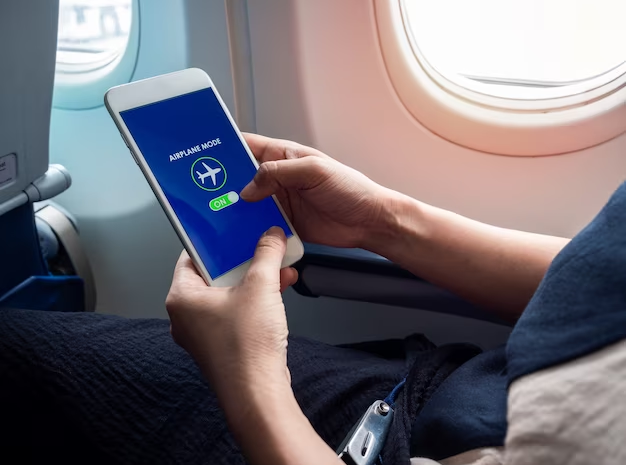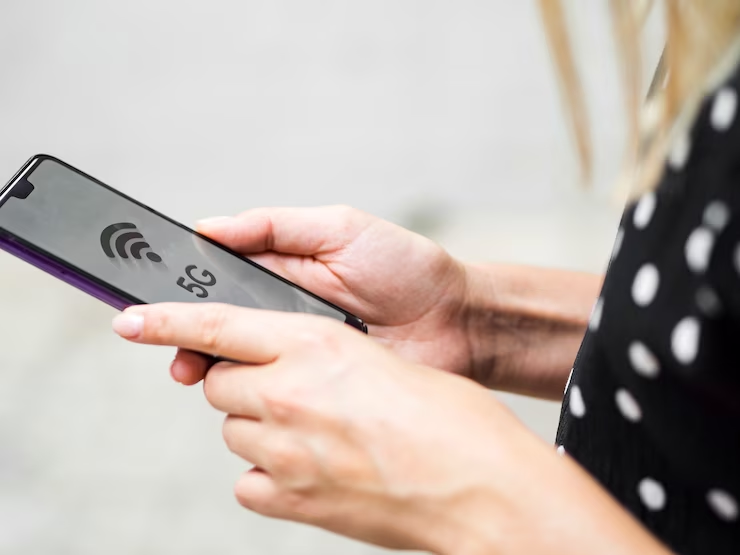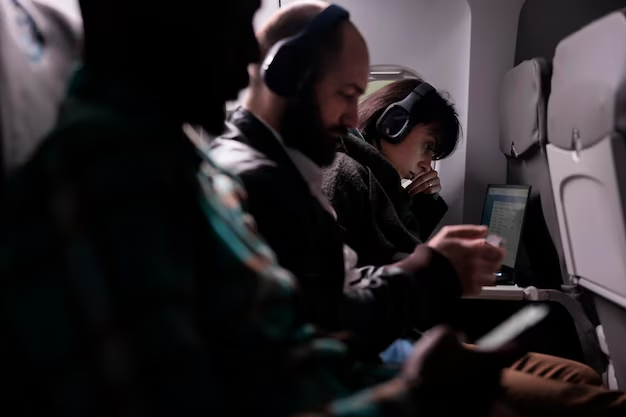Navigating In-Flight Mobile Use: A Thorough Understanding

Over time, the landscape of air travel has undergone significant changes, mainly driven by technological advancements. The advent and widespread adoption of personal electronic devices, especially mobile phones, have brought about a transformation in the norms governing air travel. This has given rise to a crucial question among passengers: Is it permissible to use a phone on an airplane? The regulations concerning in-flight mobile usage revolve around two key considerations – the potential interference with the aircraft’s systems and the impact it may have on the comfort of fellow passengers.
Airplane Mode – A Necessary Precaution
Airplane mode is a vital setting found on mobile phones and other electronic devices that disables signal-transmitting functions. Its primary purpose is to ensure the safe operation of aircraft by preventing potential interference with their navigation and communication systems. This precautionary measure is widely accepted by airlines and is endorsed by prominent aviation regulatory bodies, such as the Federal Aviation Administration (FAA) in the United States and the European Union Aviation Safety Agency (EASA) in Europe.
What is Airplane Mode?
Airplane mode, also known as flight mode or offline mode, is a feature integrated into modern smartphones, tablets, laptops, and other portable electronic devices. When activated, it suspends the device’s wireless communication capabilities, including cellular network connections, Wi-Fi, Bluetooth, and GPS. As a result, the device is isolated from all external networks and signals.
Purpose and Importance of Airplane Mode
The primary reason behind the implementation of airplane mode is to avoid potential interference with the aircraft’s sensitive equipment and communication systems. Radio-frequency emissions from electronic devices can emit signals that might disrupt avionic systems, causing navigation inaccuracies or communication disturbances between the aircraft and air traffic control.
The key advantages of using airplane mode during flights include:
- Safety: By deactivating signal transmission, the risk of electromagnetic interference is minimized, ensuring safe and uninterrupted flight operations;
- Regulatory Compliance: Airlines adhere to strict regulations set forth by aviation authorities, making it mandatory for passengers to use airplane mode during flights;
- Battery Conservation: When in airplane mode, devices consume less power as they are not actively searching for and connecting to networks;
- Peaceful Environment: Passengers can enjoy a quieter and more peaceful flight without the constant buzzing of phones or notifications.
Airline Policies and Regulatory Support
Airline companies around the world widely endorse and enforce the use of airplane mode during flights. They include this requirement in their pre-flight safety announcements and often display reminders throughout the cabin.
Notably, aviation regulatory bodies such as the FAA and EASA also support the use of airplane mode for the following reasons:
- The FAA recommends the use of airplane mode to prevent potential interference with an aircraft’s navigation and communication systems. They also encourage passengers to disable cellular voice and data services;
- EASA, as the regulatory authority for the European aviation industry, endorses similar guidelines for the safe use of electronic devices during flights, emphasizing the importance of airplane mode.
Using Airplane Mode
Enabling airplane mode on most devices is a straightforward process, typically accessible through the device’s settings or quick-access menu. When activated, the device displays an airplane icon in the status bar, indicating that all wireless communication is turned off.
Here’s a step-by-step guide to enabling airplane mode on an average smartphone:
| Device | Steps to Enable Airplane Mode |
|---|---|
| iPhone (iOS) | 1. Open “Settings.” |
| 2. Look for “Airplane Mode” in the list. | |
| 3. Toggle the switch to turn it on. | |
| Android Smartphone | 1. Go to “Settings.” |
| 2. Find and select “Network & internet.” | |
| 3. Tap “Airplane Mode” and toggle it on. | |
| Windows Phone | 1. Open the “Action Center” by swiping down from the top of the screen. |
| 2. Click on “Airplane Mode” to enable it. | |
| 3. The icon will appear in the notification area. |
Wi-Fi and Bluetooth Accessibility

With advancements in technology and increased passenger demand for in-flight connectivity, many airlines now offer in-flight Wi-Fi. This feature allows passengers to browse the web, access social media, send emails, and even stream entertainment on certain airlines. In most cases, the Wi-Fi is accessible only after the aircraft has reached cruising altitude, to prevent interference during critical phases of the flight like takeoff and landing. The availability, speed, and cost of this service can vary widely depending on the airline and the flight duration.
Similarly, the use of Bluetooth is generally allowed on flights, particularly for connecting to wireless headphones for in-flight entertainment. However, just like Wi-Fi, Bluetooth should be used responsibly without causing inconvenience to fellow passengers or interfering with the flight’s safety regulations.
Critical Phases: Takeoff and Landing
Takeoff and landing are the two most critical phases of any flight. During these moments, even the slightest electronic interference can pose a potential hazard to the aircraft and its passengers. Consequently, stringent rules have been established regarding the use of electronic devices during these phases.
Regulations for Electronic Devices
The Federal Aviation Administration (FAA) and aviation authorities worldwide have established specific regulations regarding the use of electronic devices on airplanes. These rules aim to minimize any possible electronic interference that could affect the aircraft’s delicate systems and avionics during critical moments like takeoff and landing.
The regulations can be broadly categorized as follows:
- Allowed Devices: Small electronic devices such as mobile phones and tablets are generally permitted for use during takeoff and landing, but they must be switched to airplane mode. In this mode, all wireless communications, including cellular, Wi-Fi, and Bluetooth, are disabled, significantly reducing the potential for interference;
- Restricted Devices: Larger electronics such as laptops and other bulky devices are required to be stowed away in the overhead compartments or under the seats during takeoff and landing. This precaution ensures that these devices are securely stored to prevent them from becoming dangerous projectiles in case of unexpected turbulence or impact.
Safety Rationale
The rationale behind these regulations is twofold:
- Electronic Interference: Even though modern aircraft are designed to be highly resilient to electronic interference, it is still possible for electronic devices to emit signals that could potentially interfere with sensitive avionics. While the likelihood of such interference causing a catastrophic event is low, it is better to err on the side of caution during the critical phases of flight;
- In-Flight Safety: Stowing away larger electronics ensures that they are not loose during takeoff and landing. In the event of turbulence or a sudden impact, unsecured devices could pose a serious threat to passengers and crew. By mandating their storage, the risk of physical harm is significantly reduced.
Cabin Crew Instructions
During the safety briefing before takeoff, cabin crew members emphasize the importance of complying with electronic device regulations. Passengers are informed about the critical phases of flight and are reminded to switch their small devices to airplane mode. Additionally, the crew instructs passengers to stow away larger electronics securely.
Below is a summary of the regulations for electronic devices during takeoff and landing:
| Device Type | Permitted during Takeoff and Landing | Requirements |
|---|---|---|
| Mobile Phones | Yes | Airplane Mode must be enabled |
| Tablets | Yes | Airplane Mode must be enabled |
| Laptops | No | Must be stowed away in overhead compartments or under the seats |
Guidelines by Popular Airlines

Given below is a comparison of the in-flight mobile usage policies of some of the world’s most popular airlines:
| Airline | In-flight Mobile Use |
|---|---|
| American Airlines | Allows use of mobile phones in airplane mode throughout the flight, larger devices stowed during takeoff and landing. |
| Delta Airlines | Encourages digital device use in airplane mode; in-flight Wi-Fi available. |
| Emirates | Mobile usage allowed throughout the flight; calls and text messages permitted. |
| British Airways | Devices must be in airplane mode; Wi-Fi available on selected flights. |
| Qantas | Mobiles allowed in airplane mode; stowed during takeoff and landing. Wi-Fi available on selected flights. |
It’s important to note that these policies can change and vary even within an airline based on the type of aircraft or the destination country’s regulations. Passengers are advised to check the specific guidelines provided by their airline before travel.
Mitigating Potential Issues with In-flight Mobile Usage
While the policies around in-flight mobile use have become more relaxed, there are still challenges that passengers might face. Here are some tips to enhance your in-flight experience:
- Battery Drain: Long flights, combined with heavy mobile usage, can drain your device’s battery quickly. You can mitigate this by lowering screen brightness, closing unnecessary applications, or carrying a portable charger. Some aircraft even offer in-seat USB charging ports or power outlets;
- Connectivity Issues: In-flight Wi-Fi, where available, may not offer the same speed or reliability as your home or office network. It might also be a paid service in many cases. If continuous connectivity is crucial for you, review your airline’s Wi-Fi offering before the journey;
- Comfort of Fellow Passengers: If you’re allowed to make voice calls, remember that an airplane cabin is a shared public space. Maintain a low volume and keep conversations brief to respect others’ comfort and privacy.
Conclusion
The regulations around in-flight mobile phone usage primarily revolve around safety and the comfort of all passengers. With technology advancing at a rapid pace, these rules continue to evolve, providing passengers with more freedom and flexibility. However, passengers should remain aware of their responsibilities and ensure their activities don’t interfere with the safety protocols or affect the comfort of others on the flight.
FAQ
Yes, but with caveats. Standard SMS doesn’t work in airplane mode. However, if your airline offers in-flight Wi-Fi, you can use internet-based messaging apps like WhatsApp, iMessage, or Facebook Messenger.
Yes, depending on the airline and the aircraft. Many modern planes come equipped with USB ports or power outlets that allow passengers to charge their devices. It’s recommended to check with your airline beforehand.
The basic guidelines – such as putting your device in airplane mode, using Wi-Fi and Bluetooth responsibly, and stowing away larger devices during takeoff and landing – are usually standard across domestic and international flights. However, specific airline policies might vary, so it’s best to check with your airline before your flight.
No, mobile data doesn’t work during a flight. When you switch your device to airplane mode, it suspends radio-frequency signal transmission, which includes mobile data. You can use in-flight Wi-Fi if it’s available and turned on.